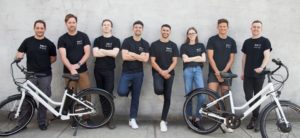Elon Musk’s SpaceX successfully completed its Crew-1 mission for NASA, as its Crew Dragon capsule brought four astronauts back to Earth splashed down off Florida early May 2nd in NASA’s first night-time ocean landing in more than 50 years. The crew reported they felt well after their arrival back on Earth following a nearly six-month mission aboard the International Space Station (ISS), NASA said.
Four astronauts ferried back in an express trip
The capsule, called Resilience, had taken off for the International Space Station (ISS) in November 2020, carrying the four Crew-1 astronauts– three from the US and one from Japan– who came back on May 2nd. The Dragon capsule parachuted into the Gulf of Mexico off the coast of Panama City, Florida, just before 3 am, ending the second astronaut flight for Elon Musk’s company.
It was an express trip home, lasting just 6 1/2 hours. Their arrival at just before 3 am on May 2nd, after almost six months in space, marks the completion of the first operational mission by SpaceX for the US space agency. This ISS –which is continuously inhabited– now has seven people left. Four of these arrived there last week, also via SpaceX aboard its Crew-2 mission.
As for Crew-2 SpaceX launched its third astronaut mission in less than a year as a slightly sooty Falcon 9 rocket mounted with a Crew Dragon capsule took to space from Kennedy Space Centre on April 23, lighting up the predawn sky as it lifted off from the historic Pad 39A.
Meanwhile, Earthbound NASA astronaut Victor Glover, the capsule’s pilot, tweeted after departing the station. “One step closer to family and home!” Hopkins and Glover — along with NASA’s Shannon Walker and Japan’s Soichi Noguchi — should have returned to Earth on April 28th, but high offshore winds forced SpaceX to pass up a pair of daytime landing attempts. Managers switched to a rare splashdown in darkness, to take advantage of calm weather.
SpaceX had practiced for a night-time return, just in case, and even recovered its most recent station cargo capsule from the Gulf of Mexico in darkness. Infrared cameras tracked the capsule as it re-entered the atmosphere; it resembled a bright star streaking through the night sky. All four main parachutes could be seen deploying just before splashdown, which was also visible in the infrared.
US mission’s first night splashdown in 1968
Space pods can safely return to Earth by landing on either the ground or water. The last US mission to land astronauts to land on water in the dark was the historic Apollo 8, the first human spaceflight to reach and orbit the Moon in 1968. The spacecraft spent six days in space before splashing into the Pacific Ocean near Hawaii before dawn on December 27 that year.
After the successful splashdown Astronaut Mike Hopkins tweeted, “On behalf of Crew-1 and our families, we just want to say thank you…It’s amazing what can be accomplished when people come together. Y’all are changing the world. Congratulations. It’s great to be back.”
Despite the early hour, the Coast Guard was out in full force to enforce an 11-mile (18-kilometer) keep-out zone around the bobbing Dragon capsule. For SpaceX’s first crew return in August, pleasure boaters swarmed the capsule, a safety risk. Once aboard the SpaceX recovery ship, the astronauts planned to hop on a helicopter for the short flight to shore, then catch a plane straight to Houston for a reunion with their families.
Their capsule, Resilience, will head back to Cape Canaveral for refurbishment for SpaceX’s first private crew mission in September. The space station docking mechanism will be removed, and a brand-new domed window put in its place.
































